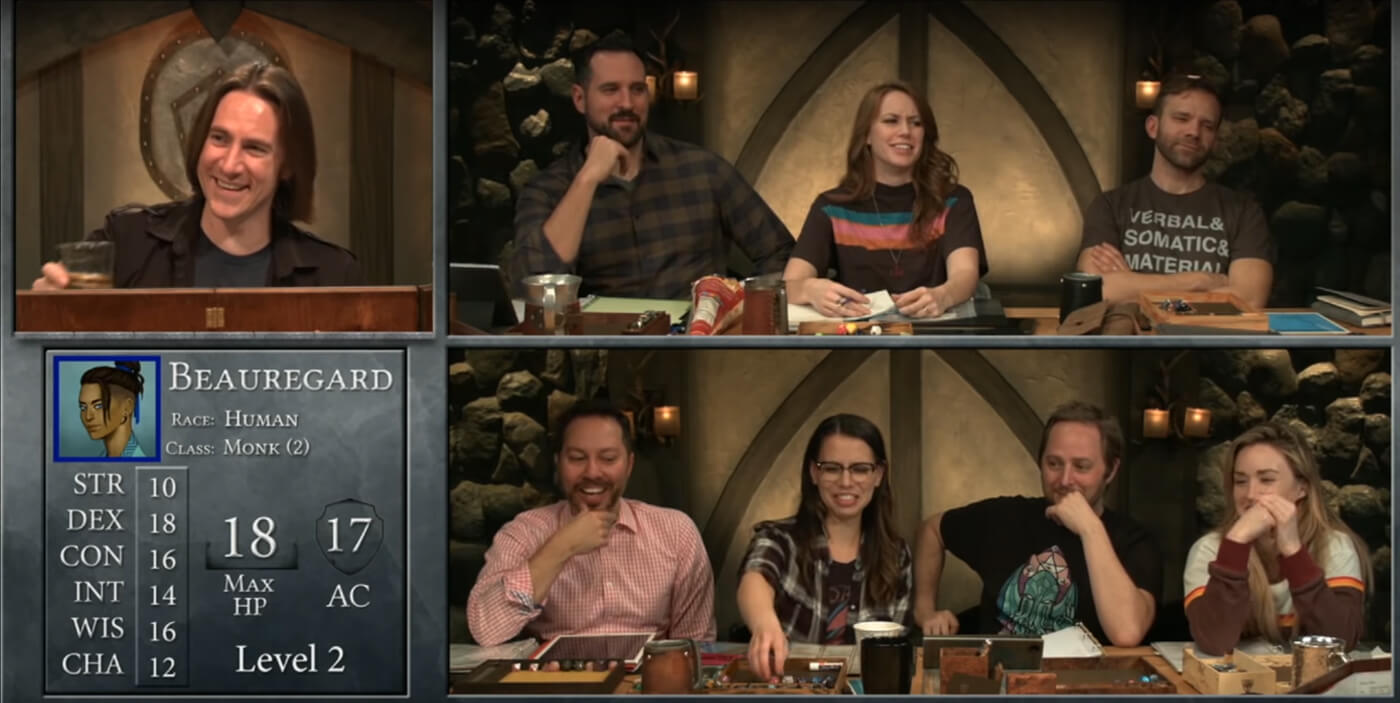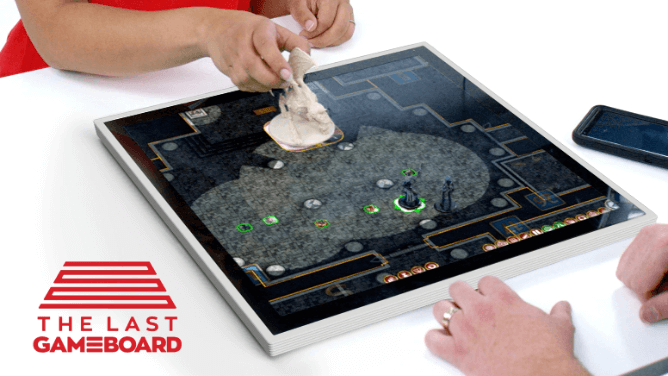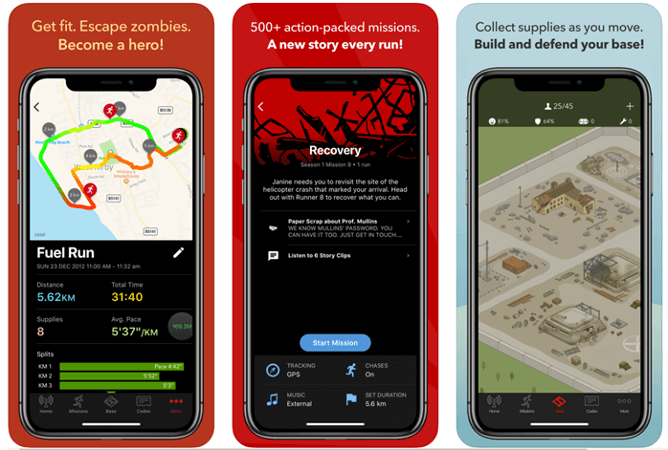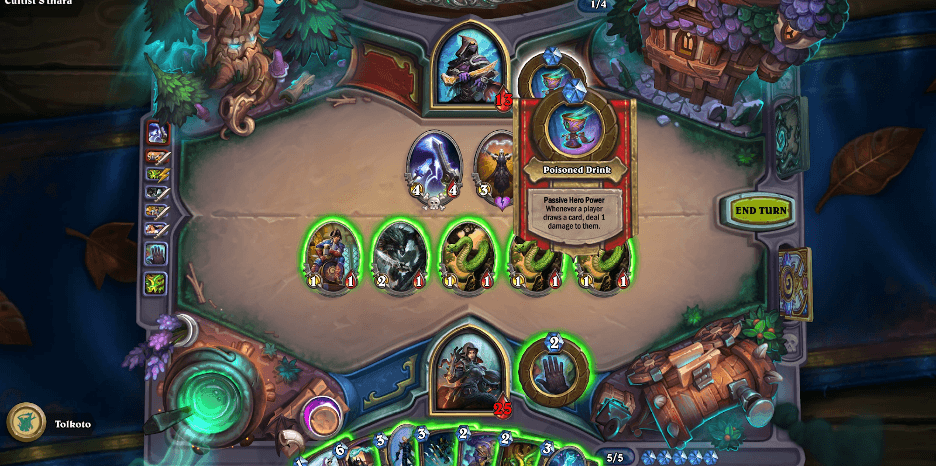Dungeons & Dragons, the granddaddy of all role-playing games, has never been more popular than it is today. Released in 1976 the tabletop fantasy game was unique for introducing user-generated storytelling. One person dubbed the Dungeon Master prepares and narrates a story to a group of players who role-play characters in that fantasy. Like a “choose-your-own-adventure” book, the narrative unfolds based upon the collective choices of the group. At the time of its release, D&D was a relatively niche game enjoyed mostly by ardent role-playing fans.
Today, more than 40 million people play D&D around the world and sales have grown by double-digit percentages for the last five consecutive years. No longer a fringe hobby, D&D features prominently in mainstream and celebrity culture (call it the “Stranger Things” bump).
D&D’s growth is illustrative of a larger trend. Tabletop games—a quintessentially analog experience that encompasses board games, card games, and parlor games—are being dramatically improved by digital tools. While the first attempts at modernizing tabletop games sought to merely replicate games in the digital realm, the next generation of games goes a step further, integrating tools such as live-streaming, user generated content (UGC), audio products, and community platforms. This digital transformation is reinventing the way we learn, play, and connect with one another over tabletop games.
As a result, modern tabletop games have the potential to be bigger than ever before. Board games are resurgent—the overall market reached $12 billion in 2018 and is growing at a 9 percent compound annual growth rate. Parlor games such as Werewolf and Mafia, in which players act and deceive each other, have grown into global hits. China’s Werewolf Kill app reached over 70 million users within a year of launch. Even one of the oldest tabletop games, chess, is making a mighty comeback: 605 million people around the world play today, and traffic to the official chess.com website roughly doubled in the first half of the year to 94 million monthly visitors.
The next generation of tabletop games will diverge from tradition in four key ways: livestreaming, user-generated content, audio-first experiences, and online community platforms.
Livestreaming will be the best instruction manual
Livestreaming—the broadcasting of real-time video on platforms like Twitch, YouTube, and Caffeine—has reached new heights of popularity, with over 7.5 billion hours watched in Q2 alone this year. But though the medium has been widely adopted as a mode of entertainment, it’s also an extraordinarily effective means of teaching complex activities.
Take chess, for example, a notoriously deep tabletop game that can take years to learn and master. The number of possible moves in chess is so large that the Shannon number was coined: an estimate of the 10^120 total possible chess board outcomes. Aspiring chess enthusiasts usually reached mastery through intensive 1:1 instruction.
Yet earlier this year, several prominent chess players started livestreaming their games on Twitch. Viewers received free chess lessons in the form of live commentary and move-by-move analysis from some of the top chess players in the world. Grandmaster Hikaru Nakamura drew over half a million followers by playing against notable League of Legends and Fortnite pros, often mentoring opponents on stream in real-time. When women’s FIDE master Alexandra Botez co-hosted a Twitch chess show with her sister, more than 320,000 followers tuned in to watch her play and ask questions on chess strategy.
With the help of streamers like Botez and Nakamura, chess has hooked a new generation of players. Hours watched on Twitch have nearly doubled every month in 2020, totaling over 36 million hours this year alone. New evangelists include top Just Chatting streamer Felix “xQc” Lengyel and Game of Thrones star Hafþór J Björnsson (“The Mountain”). Today, chess consistently trends as a top 30 game on Twitch in terms of hours watched, topping even AAA heavyweights such as Starcraft 2 and the recently released Ghost of Tsushima.
D&D is another ideal case study for livestreaming as an instruction manual. For first-timers, D&D can be a daunting experience. The map spans multiple sheets of paper, the dice have 20 sides instead of the usual 6, and the game sessions last multiple hours. Players are expected to role-play their assigned characters with little to no preparation. The D&D rulebooks are also famously obtuse—the Player’s Handbook clocks in at a hefty 320 pages. In short, D&D is very difficult to learn on your own.
Similar to chess, livestreaming has been able to help address these onboarding challenges. Shortly after the release of D&D’s fifth edition in 2015, players started livestreaming their play sessions. By watching these streams, viewers learned the rules of the game while being entertained; there’s no better teacher than seeing other humans play real games (and make mistakes). Viewers were also able to experience a bit of the spontaneous fun that comes from improvisational play, a feeling that’s difficult to grasp when reading rulebooks alone.
Through these streams, D&D has managed to capture a fresh audience. Total hours of D&D streamed has doubled every year since 2015. Last year, viewers watched 20 million hours of D&D on Twitch alone.
Livestreaming has also broadened D&D’s core audience. Forty percent of players today are female (up from 20 percent in 2012) and 60 percent of players are older than 25. A new class of D&D influencers has also emerged: Girls, Guts, Glory is a popular all-female D&D group that streams and cosplays at conventions. Critical Role, a group of professional voice actors, streams D&D to an audience of over half a million fans. Videos from their 2018 campaign drew over 160 million YouTube views.
Gameplay will be powered by players, not parts
Tabletop games have long been defined by their physical components, from the beautifully hand-drawn gameboard of Settlers of Catan to the densely written text of Magic the Gathering trading cards to the smooth marbles of Chinese Checkers. Yet, at times, these physical parts can be a barrier to entry for newcomers, as well as a limiting factor on replayability.
For example, take Warhammer, a tabletop wargame that simulates large-scale military battles between armies using intricately carved miniature figurines. Each player is responsible for bringing their own army to a match—the average army size ranges from a dozen to over one hundred models. Soul Wars, the top Warhammer starter army set produced by Creator Games Workshop, counts 52 miniatures and 12 dice (used for combat). These miniatures are usually meticulously built and hand-painted by their owners.
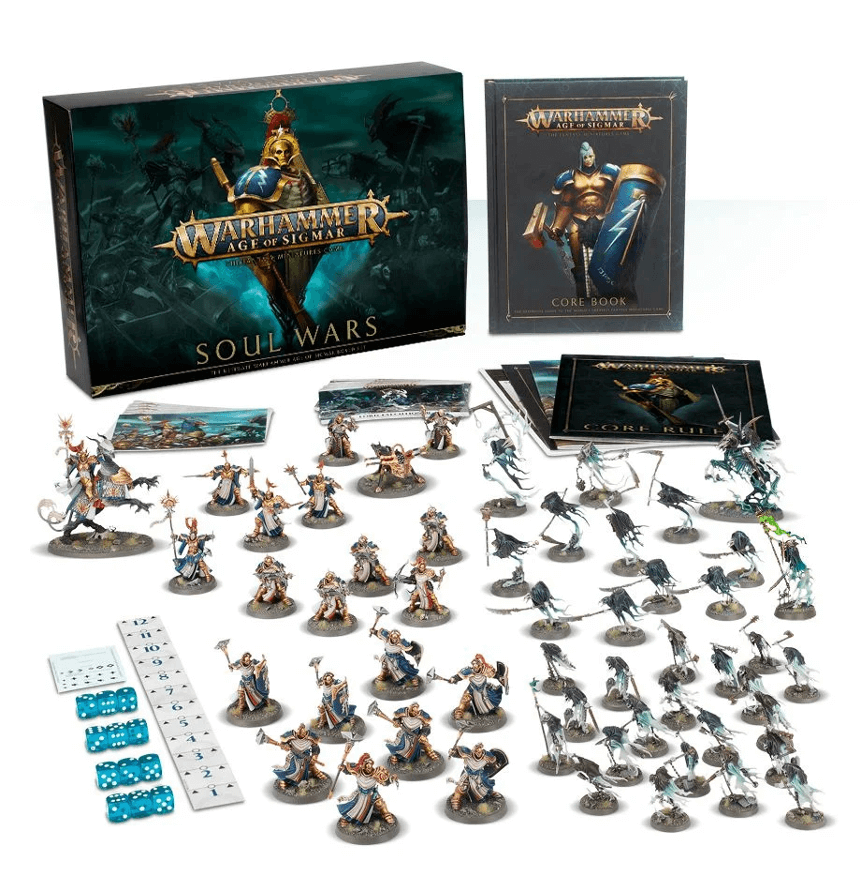 Due to the investment in time and parts required, it is very difficult for a potential new player to try out or dabble in Warhammer. You need to either own or borrow an army to play even a single game.
Due to the investment in time and parts required, it is very difficult for a potential new player to try out or dabble in Warhammer. You need to either own or borrow an army to play even a single game.
To close this gap, video game developers have recreated and improved upon parts of the tabletop game digitally. Creative Assembly’s Total War: Warhammer simulates the franchise’s large-scale battles as a real-time strategy game, enabling players to command an army without managing dice rolls or complex rulebooks. Fatshark’s Warhammer: Vermintide places players into an individual hero unit that battles endless hordes of monsters in a fresh, first-person perspective. Both franchises are critical successes that have introduced over 10 million players to the Warhammer universe. In the meantime, Warhammer‘s maker, Games Workshop, has seen revenue more than double since the first Total War game launched in 2016.
Furthermore, as video games and tabletop games collide, user-generated content is quietly emerging as a force of creativity. Sandbox games such as Roblox and Minecraft already allow players to create just about anything they can dream up. In a similar vein, we’re seeing sandbox creation tools merge with tabletop games. For example, the game Popup Dungeon enables players to create any item, ability, or character they want, then play a role-playing game with those parts. The rules are based on classic tabletop role-playing games, but you can customize almost every part of the world.
In another approach, The Last Gameboard is building a supersized tablet that allows players to scan and insert custom physical tokens or cards into a digital board game. Whereas content in a traditional board game is limited by the physical parts that a player owns, these UGC-enabled products open up content creation so that a player’s gameplay is limited only by their imagination.
The next evolution of user-generated content will likely be the introduction of AI as a creation tool. For a glimpse at what this could look like, AI Dungeon uses a cutting-edge GPT-3 AI model to generate scripts for D&D Dungeon Masters. With the GPT-3 AI model’s advances in natural language processing, most readers would be hard pressed to tell if the passage below was written by an AI or a human author.
Audio will drive continuous play and engagement
As Airpods and smart headphones have become ubiquitous, audio has emerged as a valuable engagement platform. One of the unique benefits of audio is that it can serve as both a foreground activity that you focus on, as well as a background soundtrack that you listen to as you’re cooking or walking the dog. Tabletop games are uniquely suited to capitalize on audio, due to their ability to thrive in both modalities.
As a foreground activity, parlor games such as Trivia, Charades, and Mafia, in which players guess words, act, or debate, have been very successful. With turn-based play and few physical materials needed, these party games have translated well to audio-only play. On the Alexa platform alone, there are over 10,000 audio games in the “Knowledge and Trivia” section, most of which are adaptations of parlor games. Classics such as Trivia, Scattergories, and Would You Rather are perennially popular. Song Quiz is a “name-that-song” trivia game with a cloud-based music library that is constantly updated with new songs.
As a background activity, audio enables users to experience their favorite games on-the-go or when they would otherwise be unable to directly play. D&D, for example, is usually played biweekly or monthly due to the challenges of large group scheduling. For fans seeking D&D in between group sessions, audio products provide a streamlined experience that can be enjoyed solo or on a commute. Since every action is narrated aloud in D&D, Alexa or Google can serve effectively as your Dungeon Master. Doppio’s The Vortex is a D&D-style sci-fi choose-your-own-adventure game designed for audio. For fantasy fans, The Magic Door is an interactive narrative game with over 7,500 reviews on Alexa.
Podcasts have also emerged as a regular engagement tool that enables games to stay top-of-mind. Fans have discovered that D&D campaigns can be recorded and consumed in podcast form without losing much of their potency. As a result, D&D podcast consumption has blossomed. Dungeon Master Travis McElroy started recording his family’s D&D sessions in “The Adventure Zone” in 2014 as an experiment. Today, Travis’s podcast has over 150 million downloads, two spin-off New York Times best-selling graphic novels, and an animated TV series in the works.
Travis isn’t alone—there are more than 125 D&D-focused podcasts in existence, and twice that number for tabletop games more broadly. Collectively, these podcasts help users stay engaged with their favorite tabletop games, even when unable to play directly.
Looking to the future, some developers have created innovative hybrid experiences that combine the best of tabletop games with podcast-style audio narration. Zombies, Run!, for example, is a hybrid audio-fitness game that defies categorization.
On the surface, Zombies looks like a D&D-style narrative in which you play the role of a survivor in a zombie epidemic. The twist is that the story only plays out while the listener is running. The app detects your location, tracks your speed, and simulates missions where you need to run from zombies. With deep RPG systems, the game provides a workout while keeping players hooked for the long run. Since launch, Zombies has been used by over 5 million runners and was the #1 most downloaded app in the App Store’s Health & Fitness category in June.
Network effects will accelerate in tabletop games
One of the defining traits of tabletop games has been their focus on small group play. Most games are played in groups of only two to eight people. As a result, the tabletop games community has historically been fragmented and hyper-local. Yet over the last few years, the rise of community platforms and online play has gradually overcome these barriers and brought network effects to play.
Take Magic: The Gathering as an example: Invented in 1993, Magic is one of the oldest and most popular trading card games, where players collect and build decks of cards to play against opponents. Many Magic cards are printed in limited quantities, meaning that different players will often have wildly different decks and strategies. This variability encourages constant play against new opponents.
Yet for most of Magic’s history, players wanting to meet fellow enthusiasts were limited to meet-ups at their local game store or conventions like the Penny Arcade Expo (PAX). The game’s creator, Wizards of the Coast, has partnered with over 6,000 game stores worldwide to organize weekly Magic tournaments, affectionately dubbed “Friday Night Magic” by fans. While this number may seem impressive, it falls far short of total demand—over 35 million people play Magic today.
D&D has a similar problem: new players interested in trying out the game were often told to search Facebook Groups or MeetUps for neighborhood D&D gatherings. This barrier to entry likely dissuaded many who were interested in playing the game, but were intimidated by the need to show up for an hours-long meeting with dozens of strangers.
For hyper-local tabletop games like Magic and D&D, the rise of online community platforms like Discord and Reddit has been a game-changer. Over the past decade, these platforms have been able to stitch together fragmented groups into a connected online community. The official DnD subreddit counts over 2 million members; the MTG subreddit counts over 500,000. There are more than 4,500 Discord servers dedicated to D&D or Magic, where tens of thousands of players chat with each other about their favorite cards and campaigns. First-time players can make friends, discuss strategy, and listen in on live games from the comfort of their homes.
Once a player is interested in trying out a game, the explosion of tools for remote collaboration has propelled online play. Video chat apps with screen-sharing functionality such as Zoom and Squad make it easy to chat with friends while playing. Virtual tabletop platforms such as Roll20 and Tabletop Simulator provide all the tools needed to play, down to virtual dice (with sound effects as they roll). And online marketplaces such as StartPlaying even enable players to rent a Dungeon Master for a game.
For more casual players, there are a variety of new digital options to ease the ramp-up to the complete experience. Blizzard’s Hearthstone launched in 2014 as a spiritual successor to Magic based upon the Blizzard IP universe. With simplified systems and cards rendered in gorgeous 3D animations, Hearthstone quickly grew to become one of the most popular digital card games today, with over 100 million players.
Fully digital games like Hearthstone have reached a newer, more casual audience for trading card games. These games have grown much faster than their offline counterparts due to online network effects and their ability to matchmake previously far-flung players.
Furthermore, in a flywheel of online-offline network effects, these digital games also serve as an onboarding ramp for the original tabletop game. In-store participation for Magic gatherings grew by double-digit percentages for most of 2019. Magic’s latest card expansion set, Ikoria: Lair of Behemoths, announced in April, has already racked up a record breaking 29 million YouTube views.
The next generation of tabletop games
Traditional tabletop games are being dramatically improved—and reinvented—by modern digital tools that provide innovative new playing experiences. Obtuse rulebooks can be overcome through livestreaming. User-generated digital content can provide endless replayability. Audio products create sustained engagement loops, despite infrequent play sessions. And a fragmented user base can be aggregated into online communities with strong network effects. The net result is that tabletop games are reaching larger audiences than ever before.
As tabletop games and video games collide, it becomes increasingly likely that the next big innovation in social play will be a merger of the two. With classic games like D&D, Warhammer, and Magic all reaching unprecedented levels of digitally-propelled success, the question is not if, but when and how.
-

Jonathan Lai is a general partner and founding investor of A16Z GAMES at Andreessen Horowitz, where he focuses on investing at the intersection of games and consumer, social, web3, infrastructure, and fintech.
-

Andrew Chen is a General Partner for A16Z GAMES, focused on the intersection of tech and gaming — this includes AI, studios, infrastructure, and consumer apps.

